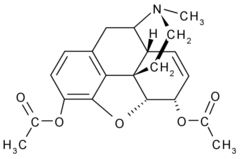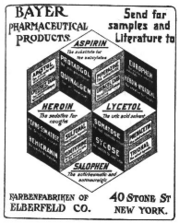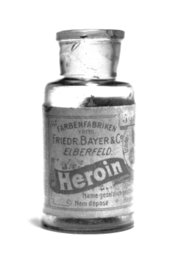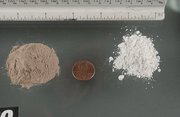INTRODUCTION
Rates of adolescent heroin use rose dramatically in the past decade. The national Monitoring the Future (MTF) surveys of school-age adolescents found that by 1992 approximately 35% of twelfth grade students reported that heroin would be fairly easy for them to obtain (1). Recent results from the MTF also report heroin use doubling for each grade level from eighth through twelfth grades from 1993 to 1997 (1). By 2001 annual prevalence of heroin use for adolescents appeared to stabilize at 0.9% of the population of ninth and twelfth graders (1). Paralleling the rise in heroin use, heroin-related emergency room visits of young adult patients aged 18 to 19 years increased 258% from 1994 to 2001 (2).
Despite the increase in adolescent heroin use, little is known about American adolescents who use heroin. When Hopfer and colleagues searched the electronic databases of Medline and Psychlit for information about heroin-using adolescents, they found 13 published articles that described the treatment options and clinical characteristics of young heroin users (3). Nine of the articles were published before 1989 and pertained to the heroin epidemic of the late 1960s and early 1970s, and another three articles were based on Mexican or British samples, resulting in only one clinical description of current American adolescent heroin users (3). The clinical characteristics of adolescents who used heroin in the 1960s and 1970s (3,4) may not describe the current population of adolescent heroin users. In order to identify gaps in the research, this review consists of a community sample (5) and treatment, samples (5,6) of current American adolescent heroin users.
The literature on American young people in treatment for heroin abuse indicates that the majority of the patients are older white male adolescents and young adults. Hopfer and colleages (5) identified 13 adolescents in a Colorado treatment program from 1991 to 1998 who used heroin more than five times. Twelve of the 13 heroin-using patients were white and 11 were male, with an average age of 16 years. Hopfer's analysis of the 1997 Treatment Episode Data Set (TEDS) also found that the majority of heroin-using adolescents admitted to over 5000 treatment centers across the nation were white (79.9%), while almost an equal percentage of male (53.4%) and female heroin users were identified (5). Young adults (aged 18 to 25 years) who were admired to treatment for heroin detoxification in two New England treatment programs also tended to be male (64%), white (79%) (6), and averaged 22 years of age.
The community samples of the MTF surveys indicate that equal proportions of eighth graders use heroin either by injection or other means, and higher proportions of older students used heroin by injection (1). It is not surprising that 62% of the young adults in treatment for heroin detoxification in New England reported injection drug use (6). Results from Hopfer's analysis of the TEDS sample found that 57.5% of the sample used heroin on a daily basis prior to treatment (5).
Polydrug use also appears common among heroin-using adolescents. Compared to patients who reported no heroin use, heroin-using adolescents in Colorado had significantly more substance dependence and substance abuse diagnoses (5). More of the heroin-using patients also were cocaine-, amphetamines-, and hallucinogens-dependent. Approximately two-thirds (62.7%) of the New England detoxification patients reported current use of more than one substance, and the most commonly reported drugs were cocaine, marijuana, alcohol, sedatives, and other opiates.
In addition to a relatively high severity of heroin use and concomitant polydrug abuse, heroin-using young people tend to suffer from psychiatric symptoms. In the New England sample 22% reported a history of psychiatric diagnoses, such as depression, bipolar disorder, and attention-deficit hyperactivity disorder; and female patients were more likely to report psychiatric illnesses than were males (6).
These few research surveys form the basis of our knowledge about the clinical characteristics of American adolescents who currently use heroin. However, not much is known about which characteristics predict severity of heroin dependence or injection heroin use. This study was designed to address some of the deficits in the literature and to identify which characteristics predict adolescents in treatment who inject heroin.
METHODS
A retrospective review of the clinical charts of 97 patients who had received residential treatment for heroin dependence on the adolescent unit of an eastern Pennsylvania chemical addiction rehabilitation center in 1999 was conducted. Information regarding age, gender, race, amount and route of use, length of use, number of DSM-IV heroin dependence symptoms, other drugs abused, and comorbid nonsubstance-related psychiatric diagnoses were recorded.
Case Selection
Data from all patients who met the inclusion criteria for heroin dependence on the adolescent unit of an eastern Pennsylvania residential chemical addiction treatment program in 1999 were recorded. A case represents the first treatment episode for an individual patient. Although some patients were readmitted for treatment during the year, only the first treatment episode was included in the analysis.
Eighteen cases were deleted from analysis because of multiple treatment episodes, the clinical chart was not available for data collection, the patient transferred to the adult program, or because the patient did not have a discharge diagnosis of heroin dependence based on DSM-IV (71 criteria. The data analyses were conducted on 97 cases.
Data Collection
Demographic data included gender, age in years, race, payment method, and referral source. Due to the age of these subjects, employment data were not collected, nor was it available for their parent(s) or guardian(s).
Length of stay by days in the residential treatment program and type of discharge also were collected from the electronic database. Discharge type was divided into three categories: routine discharges: transfers to other treatment programs; and unusual discharges, such as against medical advice, patient noncompliance, or other administrative discharge.
The number of DSM-IV criteria (7) met for diagnosis was collected, as were data on heroin route of administration, amount of daily use (based on $10,00 bags), frequency of use by days per week, and lifetime months of heroin use.
Data about other substance use also were collected. Psychiatric diagnoses were recorded from the discharge summary, and, when available, a psychiatric or psychological evaluation. However, these evaluations were not routinely performed on all patients. Specific final diagnoses were merged into the following broader diagnostic categories: anxiety, depression, bipolar disorder, eating disorder, post-traumatic stress disorder (PTSD), conduct disorders, and attention deficit hyperactivity disorders (ADHD).
Analysis
Basic descriptive statistics that include frequencies and means, as well as difference tests such as student t-tests, chi-squares, and logistic regressions, were applied. Difference tests were used to determine whether gender or other psychiatric conditions were associated with injection use over intranasal administration and with specific amounts of heroin per use episode. Potential gender-based or diagnosis-based differences are critical to identify because they influence treatment decisions.
Finally, regression analyses, both standard multiple regression techniques and logistic regression procedures, were applied to determine the best predictors among various variables hypothesized to determine severity of dependence and the likelihood of intraveneous use compared to intranasal use (8). Regression analyses allowed for an evaluation of numerous predictors simultaneously, such as gender, age, number of psychiatric diagnoses, and age of onset of substance use. Given the correlation between any number of these factors individually and greater severity of heroin dependence. multiple regression techniques were necessary. These analyses attempted to identify those predictors that were more closely associated with a greater severity of heroin dependence, quantified by the number of DSM-IV heroin-dependence symptoms.
Logistic regressions yield easily interpretable results about the predictive strength of each variable (i.e., odds ratio) and are more appropriate for naturally dichotomous outcome categories, such as IV-use, and so were performed. Sensitivity and specificity estimates that detail the accuracy of the prediction models also were generated. Larger numbers of predictor variables in the logistic regression model were used than are normally acceptable because the analyses were exploratory and descriptive in nature.
RESULTS
Demographics and Treatment
The average age of an adolescent was 17.35 years (SD 1.16, range 14-19 years), and patient age did not differ significantly by gender. Males averaged 17.54 years of age, and females averaged 17.15 years of age. The population was divided almost equally between male (52%) and female (48%) patients. The majority of the patients were Caucasian (96%), while the remainder were African American (1%), Hispanic (2%), or unidentified (1%).
The patients appear to be from a middle-class background since payment for treatment services was met mainly through private health insurance coverage (78%) and private pay (20%). None of the patients were funded through publicly supported programs, and only 2% supplemented their treatment fees with scholarship funding. The patients also mainly resided in suburban areas (62%), urban areas (31%), and rural areas (9%) of Pennsylvania, New Jersey, Maryland, Virginia, Delaware, Connecticut, North Carolina, and Florida.
The average length of the treatment episode was 14 days, ranging from one day to one month. Eighty-four percent of the patients were discharged routinely from treatment.
Psychiatric Functioning
Of the patients, 41% were diagnosed with an additional psychiatric diagnosis, most commonly one of the depressive disorders. These psychiatric diagnoses included depressive disorders (22.7%), post-traumatic stress disorder (PTSD) (9.3%), anxiety disorders (6.2%), eating disorders (5.2%), bipolar affective disorder (3.1%), conduct disorder (3.1%), and attention deficit hyperactivity disorder (ADHD) (1.0%). The total number of diagnoses is greater than 41% because some patients had multiple diagnoses.
Female patients tended to be diagnosed with a higher number of psychiatric conditions than were male patients. The female patients had an average of 0.68 psychiatric diagnoses, compared to an average of 0.38 psychiatric diagnoses for the male patients, t = 1.8, p = .07. Eating disorders were the only disorders more commonly found in female patients (11%) than male patients (0%), [chi square] = 3.6, p = 0.07.
Heroin and Other Drug Use
Average duration of heroin use prior to admission was 13.37 months (SD 12.34, range 1-60 months). Male patients (average of six bags per day) used significantly more heroin prior to admission than did female patients (average of four bags per day), t = 2.65, p < 0.01.
A majority of the patients (53.6%) used heroin intravenously; 36.1% used heroin exclusively intravenously, and 17.5% used it both intravenously and intranasally. An additional 42.3% used heroin intranasally, but not intravenously, and 4.1% smoked heroin.
Patients who reported using an intravenous route of administration had been using longer than those who had used intranasally; an average of 17 months of use for intravenous users as compared to an average of 10 months for adolescents who did not use intravenously (t = -2.15, p < 0.05). Injectors also were older (average age of 17.6 years) than their noninjecting counterparts (average age of 17 years), t = -2.5, p < 0.05.
No differences were based on injecting route of administration vs. snorting in the prevalence of anxiety, depressive, eating, or bipolar disorders. There also were no differences in the prevalence of other substance use disorders, such as cocaine, marijuana, or alcohol by route of administration. Length of treatment stay also did not differ by route of administration. No gender differences were found for additional drug use.
The adolescents used an average of 1.8 (SD 1.11, range 0-5) other drugs prior to treatment. Fifty-two percent were diagnoses with another substance abuse or dependence, excluding comorbid nicotine dependence. The most common second drug of abuse was nicotine (92%), followed by marijuana (43.3%), cocaine (13%), alcohol (10,3%), and additional opioids (9.3%).
Predictors of Route of Administration and Severity of Heroin Dependence
Overall, the logistic regression model was modestly successful at predicting those adolescents who had used intravenously (see Table 1). The predictor variables correctly classified 64.21% of the adolescents as injectors or noninjectors of heroin, [chi square] = 15.92, df = 12, p > 0.05. Model sensitivity was 72.55%, which indicates the percentage of accurately predicted IV drug users, and model specificity was 54.55%. indicating the percentage of accurately identified nonintravenous heroin users.
Consistent with univariate analysis, age emerged as a significant predictor of injection heroin use. Every one-year increase in age, from 14 to 19 years, was associated with a 1.7 times greater likelihood of injecting heroin (Wald = 5.3, p < 0.05). Comorbid alcohol and nicotine use also were associated with an increased likelihood of injecting heroin use. Adolescents with an alcohol abuse or dependence diagnosis were five times more likely than were those without a serious alcohol problem to use heroin intravenously (Wald = 3.79, p=0.05), The odds ratio associated with alcohol use estimating the increased likelihood of injecting heroin use is interpreted with caution, however, as only 10% (N = 10) of adolescents at this young age met criteria for alcohol dependence.
A linear regression model was only minimally successful in capturing the variance in severity of heroin dependence, as defined by the number of DSM-IV (7) dependence symptoms, ranging from three to seven symptoms. A model that included the same predictors as those used in the logistic regression model accounted for a small percentage of the variance in number of heroin-dependence symptoms. The model accounted for 6.3% of the variance. Length of treatment episode was the single independent variable predictive of dependence symptoms. Not surprisingly; a longer length of treatment was associated with a greater number of dependence symptoms (beta = 0.34. t = 3.2, p < 0.01).
DISCUSSION
The young heroin dependent patients in treatment at the Caron Foundation are similar to other recently described samples of American adolescent heroin users, despite possible socioeconomic differences in the samples. For example, the large TEDS database is comprised mainly of patient data from publicly funded treatment programs. The families of the adolescent patients at the privately funded Caron Foundation were able to afford treatment through private health care insurance or had the ability to self-pay. Likewise, the patients in this sample primarily resided in the northeastern United States, but they were similar to patients found in national (5), western (5), and New England (6) samples.
Similar to the youthful patients in treatment for drug addiction in other parts of the country (5,6), these patients tended to be Caucasian and older adolescents. The almost equal number of female (48%) and male heroin dependent patients in this sample compares to the larger sample from the TEDS database (5) in which 46.6% of the heroin-dependent patients are female. The increase in heroin dependence among young females at the Caron Foundation reflected a dramatic increase in the numbers of adolescent females presenting for heroin treatment from 2% in 1996 to a high of 21% in 1999. Male adolescents admitted for heroin dependence during that same period increased to a high of 14% of total admissions in 1998 and decreased to 10% in 1999.
The increase in adolescent female heroin use across the nation may be related to the ease in intranasal administration and to fashion trends. The allure of the underweight heroin "chic" look for adolescent girls has been noted in other research (9). Rates of eating disorders found in the general population range from 0.1% to 3.0% (7), while almost 11% of the females in this sample were diagnosed with eating disorders. In preliminary interviews with two female adolescent heroin addicts, the first author independently was told by both young women that they used heroin to control their weight (10). Similarly, Mitchell (11) reported a clinical case of a woman with a preexisting condition of bulimia, who had used heroin for its emetic effects.
While the use of the DSM-IV (7) to diagnose substance abuse disorders in adolescents can be controversial (12), counting the number of DSM-IV criteria for heroin dependence does indicate severity of use. Over half (52%) of the adolescents in this review met most of the heroin dependence criteria (six or seven criteria), and a majority used substantial amounts of heroin, four or more bags per day through intravenous use. Many of these patients had an early initiation into heroin use, based on the average of 17 years of age at admission to treatment and average of 13 months duration of use prior to admission.
The incidence of intravenous use among these adolescents is striking. Over half of the sample (53.6%) used an intravenous route of administration, comparable to the MTF community sample (1), and other treatment samples (5,6). It appears that age may be related to intravenous use, since older adolescents in this research study were found to be more likely to inject heroin than were younger patients.
The implications for this high rate of intravenous drug use among certain heroin-dependent adolescents are obvious. These adolescents are at risk for HIV/AIDS, hepatitis, and other health problems related to injecting dirty substances, such as emboli, sepsis, and skin infections (13). These adolescents also may spread contagious diseases, such as HIV and hepatitis, into the general adolescent population through sexual contact (13). The high prevalence of intravenous drug use points to the benefits of routine testing and increased education about these diseases for this population.
Like other samples of adolescent heroin users, polysubstance use among this sample was common, suggesting that adolescents who become addicted to heroin also experiment with other drugs. Ninety-two percent of the sample used nicotine daily compared to a rate of 7% reported for high school seniors in the MFT (1). Concurrent nicotine and alcohol use were associated with an increased likelihood of intravenous route of heroin administration. Although current inhalant use was not commonly reported by this sample or other samples, inhalants may be a precursor of heroin use (14).
The percentages of adolescents with nonsubstance-related psychiatric diagnoses (41%) appeared low compared to previous reports of high comorbidity in adolescents with substance abuse disorders (15-17), but it was almost double the percentage (22%) of young adult heroin detoxification patients in the New England sample (6). It is not known if the New England facilities conducted psychiatric evaluations routinely on all patients, but that was not the practice at the Caron Foundation, which is licensed for drug and alcohol rehabilitation treatment. Withdrawal symptoms may mask or mimic psychiatric symptoms and it is not unusual to postpone psychiatric diagnosis until patients are stabilized. Thus, patients may be underdiagnosed for psychiatric problems during acute inpatient treatment episodes. Future research at treatment facilities may want to consider adding structured research psychiatric instruments.
This review highlights a critical need for research to further characterize adolescent heroin dependence and other heroin use in youth. Nicotine and alcohol, two predictors of intravenous route of administration use that emerged from this study, highlight the significance of polydrug use in heroin addiction. The other predictor of intravenous use, age, points to the role of early identification and treatment of adolescent heroin users to decrease the likelihood of future intravenous use.
REFERENCES
(1.) Johnston LD, O'Malley PM, Bachman JG. Monitoring the Future National Results on Adolescent Drug Use: Overview of Key Findings 2001. NIH Publication No. 02-5105. Bethesda, MD: National Institute on Drug Abuse, 2002:22-23.
(2.) Substance Abuse and Mental Health Services Administration, Office of Applied Studies. Emergency Department Trends from the Drug Abuse Warning Network: Final Extimates 1994-2001. DAWN Series D-21, DHHS Publication No. (SMA) 02-3635, Rockville, MD: Substance Abuse and Mental Health Services Administration, Office of Applied. 2002:90.
(3.) Hopfer CJ, Khuri E, Crowley TJ. Hooks S. Adolescent heroin use: a review of the descriptive and treatment literature. J Subst Abuse Treat 2002; 23:231-237.
(4.) Schwartz RH. Adolescent heroin use: a review. Pediatrics 1998; 102:1461-1566.
(5.) Hopfer CJ, Mikulich SK, Crowley TJ. Heroin use among adolescents in treatment for substance use disorders. J Am Acad Child Adolesc Psych 2000; 39(10):1316-1323.
(6.) Pugatch D, Strong LL, Has P, Patterson D, Combs C. Reinert S, Rich JD, Flanigan T, Brown L. Heroin use in adolescents and young adults admitted for drug detoxification. J Subst Abuse 2001; 13:337-346.
(7.) American Psychiatric Association. Diagnostic and Statistical Manual of Mental Disorders. 4th ed. Washington, DC: American Psychiatric Association, 1994.
(8.) Tabachnick BG, Fidell LS. Using Multivariate Statistics. 3rd ed. New York: Harper Collins College, 1996.
(9.) National Center on Addiction and Substance Abuse at Columbia University. 1998 CASA National Survey of American Attitudes on Substance Abuse IV: Teens, Teachers and Principals. New York. NY: National Center on Addiction and Substance Abuse at Columbia University, 1998.
(10.) Gordon SM. Adolescent Drug Use: Trends in Abuse, Treatment and Prevention. Wernersville, PA: Caron Foundation, 2000:6-7.
(11.) Mitchell P. Heroin-induced vomiting in bulimia. Am J Psychiatry 1987; 144:249-250.
(12.) Bukstein O, Kaminer Y. The nosology of adolescent substance abuse. Am J Addict 1994; 1-13.
(13.) Rowan AB, Fudala PJ, Mulligan J. The medical management of adolescent heroin dependence. Curr Psychiatry Rep 2000; 2:527-530.
(14.) Johnson EO, Schutz CG, Anthony JC, Ensminger ME. Inhalants to heroin: a prospective analysis from adolescence to adulthood. Drug Alcohol Depend 1995; 40:159-164.
(15.) Stowell RJA, Estroff TW. Psychiatric disorders in substance-abusing adolescent inpatients: a pilot study. J Am Acad Child Adolesc Psych 1992; 31:1036-1040.
(16.) Hoven JG, Cantwell DP, Kiriakos R. Psychiatric comorbidity in hospitalized adolescent substance abusers. J Am Acad Child Adolesc Psych 1994; 33:476-483.
(17.) Kandel DB, Johnson JG, Bird HR, Weissman MM, Goodman SH, Lahey BB, Regier DA, Schwab-Stone ME. Psychiatric comorbidity among adolescents with substance use disorders: findings from the MECA study. J Am Acad Child Adolesc Psych 1999; 38:693-699.
Susan M. Gordon, Ph.D., * Frank Mulvaney, Ph.D., and Amy Rowan, M.D.
Caron Foundation, Wernersville, Pennsylvania, USA
* Correspondence: Susan M. Gordon, Ph.D., Caron Foundation, Galen Hall Rd., Box 150, Wernersville, PA 19565-0150. USA; E-mail: sgordon@caronfoundation.org.
COPYRIGHT 2004 Taylor & Francis Ltd.
COPYRIGHT 2004 Gale Group




